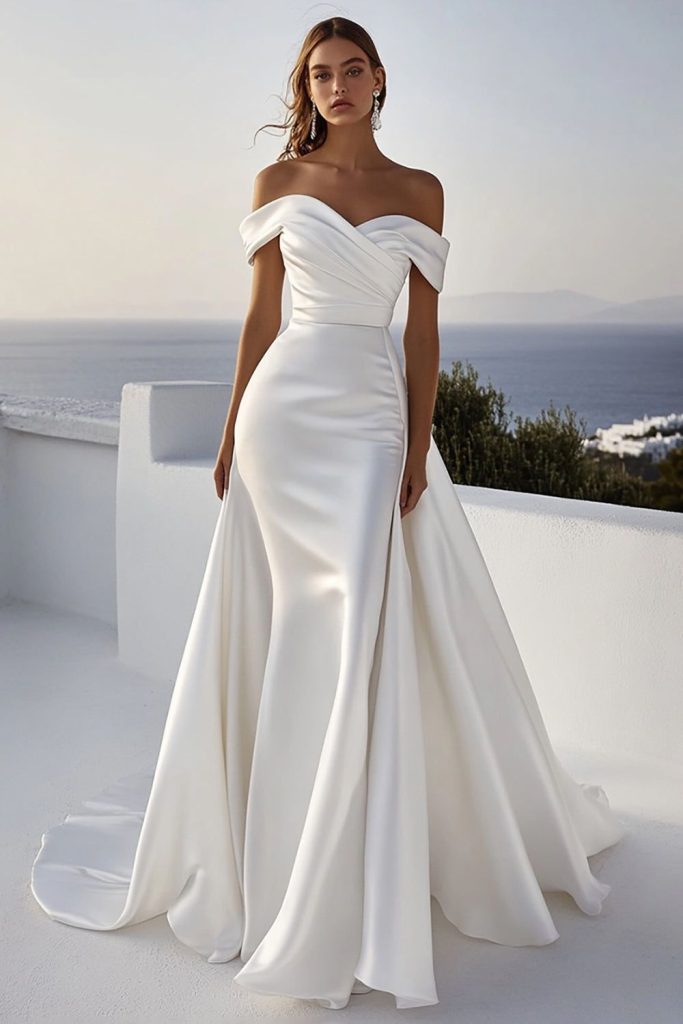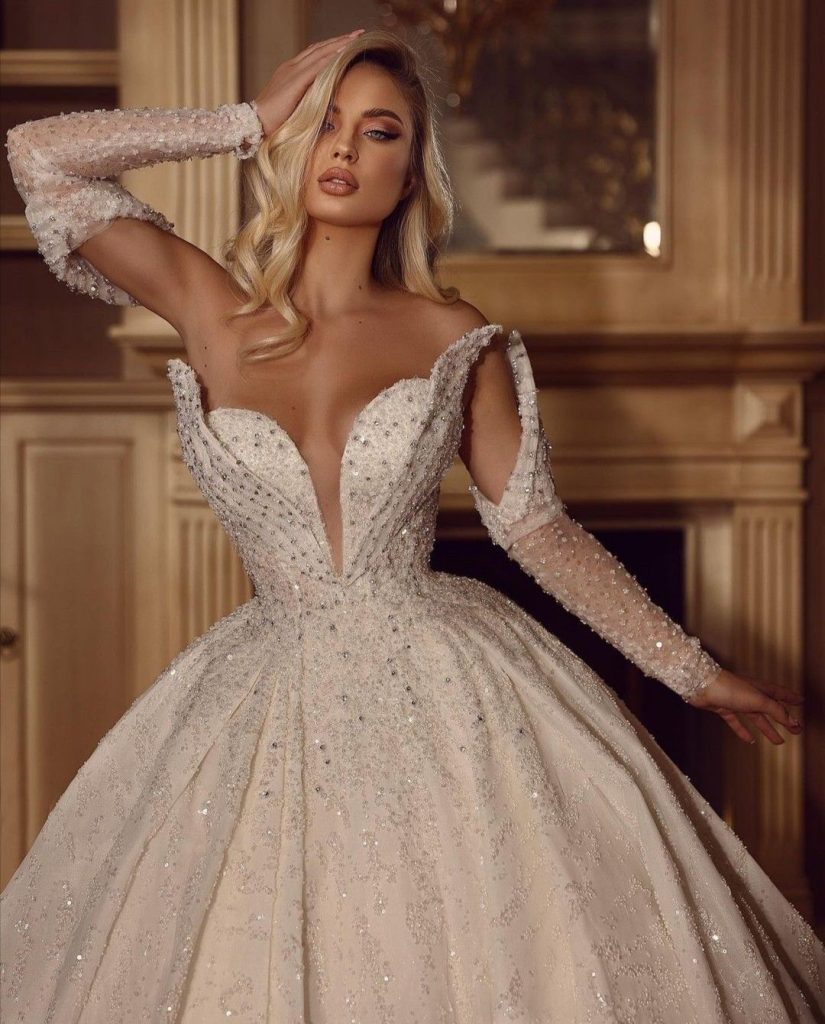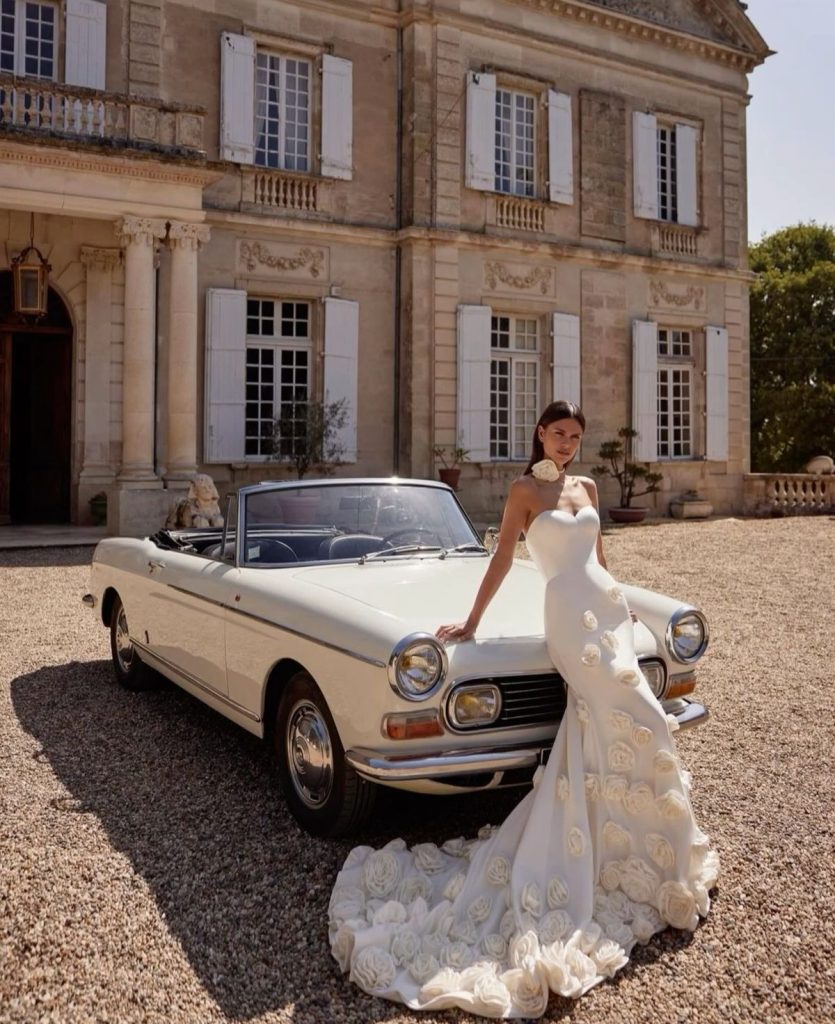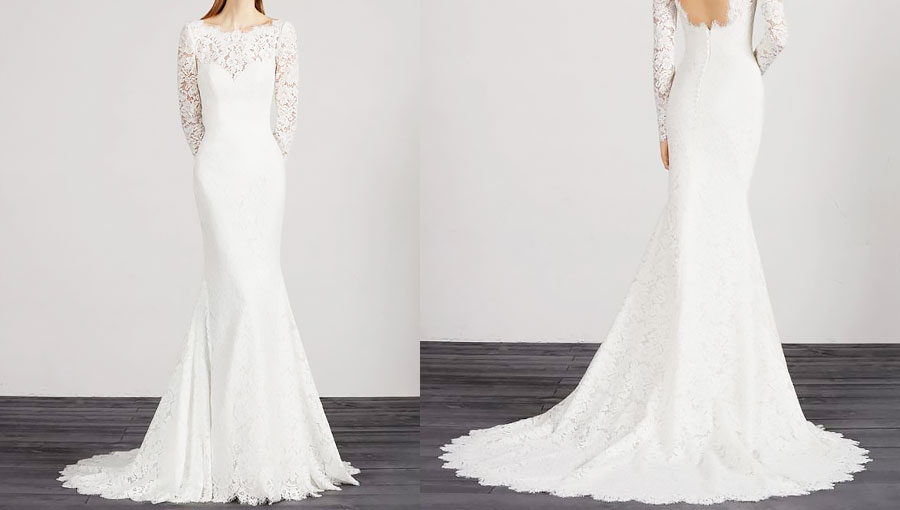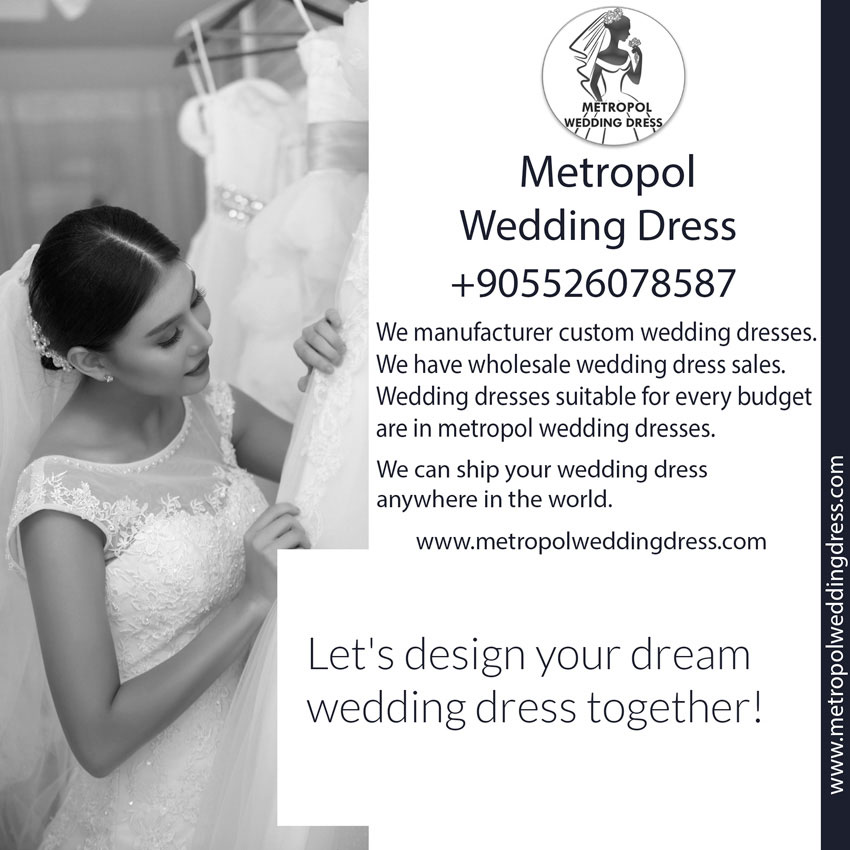
White art bridal wedding dress is more than just a garment; it is a canvas of emotion, tradition, and creativity. For centuries, the white wedding dress has symbolized purity, love, and the beginning of a new chapter in life. However, beyond its symbolic meaning, the white wedding dress is a work of art, blending intricate design, craftsmanship, and cultural influences. This article explores the multifaceted world of white art bridal wedding dresses, delving into their history, artistic elements, cultural significance, modern trends, and practical considerations for brides-to-be. From the delicate embroidery of a vintage gown to the avant-garde silhouettes of contemporary designs, the white wedding dress remains a timeless masterpiece.
The Historical Evolution of the White Wedding Dress
Origins of the White Wedding Dress
The white wedding dress, as we know it today, has its roots in the 19th century. While many associate white with purity and virginity, the choice of white was initially a symbol of wealth and status. Before the industrial revolution, white fabric was expensive to produce and difficult to maintain, making it a luxury reserved for the elite.
The pivotal moment in the history of the white wedding dress came in 1840 when Queen Victoria of England married Prince Albert. Breaking from the tradition of wearing colorful or silver gowns, Victoria chose a simple yet elegant white satin dress adorned with Honiton lace. Her decision was widely publicized, and the white wedding dress became a trend among affluent brides in Europe and beyond. This marked the beginning of the white dress as a bridal staple, transforming it into a cultural icon.
Early 20th Century: Simplicity and Elegance
In the early 20th century, white wedding dresses reflected the societal shifts of the time. The Edwardian era (1901–1910) favored high-necked, long-sleeved gowns with intricate lace and delicate embroidery, emphasizing modesty and refinement. The 1920s, however, brought a dramatic change with the rise of the flapper style. Brides embraced shorter hemlines, dropped waists, and Art Deco-inspired embellishments, reflecting the era’s liberated spirit.
The Great Depression in the 1930s led to simpler designs, with many brides opting for practical dresses that could be reworn. Despite economic constraints, creativity flourished, with brides incorporating handmade details like crocheted lace or embroidered motifs. By the 1940s and 1950s, post-war optimism ushered in a return to glamour. Designers like Christian Dior introduced voluminous skirts and cinched waists, creating the iconic “princess” silhouette that remains popular today.
White Art Bridal Wedding Dress
The late 20th century saw the white wedding dress evolve into a platform for self-expression. The 1960s and 1970s embraced bohemian and minimalist styles, with flowing fabrics and floral headpieces replacing structured gowns. The 1980s, influenced by figures like Princess Diana, brought extravagant designs with puffed sleeves, long trains, and opulent fabrics.
By the 1990s and early 2000s, brides sought versatility, with designers offering convertible dresses that could transition from ceremony to reception. The white wedding dress became a reflection of individuality, with brides incorporating personal touches like colored accents, unique necklines, or unconventional fabrics.
The Artistic Elements of White Bridal Wedding Dresses
The white art bridal wedding dress is a masterpiece of craftsmanship, combining various artistic elements to create a garment that is both functional and breathtaking. Below are the key components that contribute to its artistic allure.
Fabric Selection: The Foundation of Elegance
The choice of fabric is the cornerstone of any wedding dress design. Common fabrics for white bridal gowns include:
- Satin: Known for its smooth, lustrous surface, satin creates a polished and sophisticated look. It drapes beautifully, making it ideal for structured silhouettes.
- Lace: A timeless favorite, lace adds intricate patterns and texture. From delicate Chantilly lace to bold Alençon lace, this fabric evokes romance and artistry.
- Tulle: Lightweight and ethereal, tulle is often used for voluminous skirts or soft overlays, creating a fairy-tale effect.
- Chiffon: Flowing and sheer, chiffon is perfect for bohemian or beach wedding dresses, offering a light and airy aesthetic.
- Organza: Crisp and slightly sheer, organza adds structure while maintaining a delicate appearance.
Each fabric serves as a canvas for the designer’s vision, with its texture and sheen influencing the overall aesthetic of the dress.
Embellishments: The Art of Detail
Embellishments transform a simple white dress into a work of art. Common techniques include:
- Embroidery: Hand-stitched or machine-made, embroidery adds intricate patterns, often featuring floral motifs, geometric designs, or cultural symbols.
- Beading: Crystals, pearls, and sequins catch the light, adding sparkle and dimension. Beading can range from subtle accents to all-over embellishments.
- Appliqué: Fabric cutouts, often in lace or satin, are sewn onto the dress to create three-dimensional effects.
- Ruching and Pleating: These techniques manipulate fabric to create texture and visual interest, enhancing the dress’s silhouette.
These embellishments require skilled artisans, many of whom spend hundreds of hours perfecting each detail. The result is a dress that tells a story through its craftsmanship.
Silhouette: Shaping the Artistic Vision
The silhouette of a wedding dress defines its overall form and is a critical artistic choice. Popular silhouettes include:
- A-Line: Fitted at the bodice and gradually flaring out, this universally flattering shape resembles the letter “A.”
- Ball Gown: Characterized by a fitted bodice and a voluminous skirt, this silhouette creates a dramatic, fairy-tale look.
- Mermaid: Fitted through the bodice and hips, flaring out at the knees, this style accentuates curves.
- Sheath: A straight, column-like shape that skims the body, ideal for minimalist or modern brides.
- Empire Waist: Featuring a high waistline just below the bust, this silhouette is flowy and romantic, often seen in bohemian designs.
Each silhouette serves as a framework for the designer’s creativity, allowing them to play with proportions, textures, and embellishments.
Color Variations: Beyond Pure White
While white is the traditional color for bridal dresses, modern designs explore subtle variations to enhance the artistic effect. Shades like ivory, champagne, blush, and off-white offer warmth and complement different skin tones. Some designers incorporate ombre effects or metallic threads, adding a contemporary twist while preserving the dress’s classic appeal.

White Wedding Dress
Western Traditions
In Western cultures, the white wedding dress is deeply tied to notions of purity and innocence. However, its significance extends beyond symbolism. The dress is a focal point of the wedding ceremony, embodying the bride’s personality and the couple’s shared vision. It is often preserved as a family heirloom, passed down through generations as a tangible link to the past.
Global Perspectives
While the white wedding dress is a global phenomenon, its adoption varies across cultures:
- Asia: In countries like China, red is traditionally the bridal color, symbolizing luck and prosperity. However, Western influence has led many brides to choose white dresses for part of the ceremony, often blending traditional and modern elements.
- India: Indian brides typically wear vibrant colors like red, gold, or green, but white is sometimes used in Christian or Western-style weddings. Designers like Sabyasachi have popularized fusion gowns that combine Indian embroidery with white fabrics.
- Middle East: In Muslim weddings, white dresses are common, often featuring modest designs with long sleeves and high necklines. Intricate beadwork and embroidery reflect the region’s rich textile traditions.
- Africa: Wedding attire varies widely across African cultures, but white dresses are popular in Christian ceremonies. Designers often incorporate tribal patterns or bold accessories to honor local heritage.
The global appeal of the white wedding dress lies in its versatility, allowing brides to adapt it to their cultural and personal contexts.
Modern Trends in White Art Bridal Wedding Dresses
The white wedding dress continues to evolve, with designers pushing boundaries to create innovative and artistic designs. Below are some of the most prominent trends in 2025.
Minimalist Elegance
Minimalism remains a dominant trend, with brides favoring clean lines, simple silhouettes, and unembellished fabrics. Designers like Vera Wang and Carolina Herrera have embraced this aesthetic, creating sleek gowns that emphasize quality and fit over ornate details. Minimalist dresses are versatile, allowing brides to accessorize with bold jewelry or statement veils.
Sustainable Fashion
Sustainability is a growing concern in the bridal industry. Many designers are using eco-friendly fabrics like organic cotton, recycled polyester, or hemp-based materials. Brands like Reformation and Stella McCartney offer sustainable white wedding dresses that combine style with environmental consciousness. Brides are also opting for vintage or second-hand gowns, adding a layer of history to their look.
Bold Silhouettes
While classic silhouettes like the ball gown remain popular, avant-garde designs are gaining traction. Oversized sleeves, asymmetrical hemlines, and architectural shapes create a dramatic effect, appealing to fashion-forward brides. Designers like Viktor & Rolf and Alexander McQueen are known for their sculptural approach to bridal wear.
Colored Accents
While white remains the dominant color, many brides are incorporating subtle pops of color. Embroidered flowers, pastel linings, or metallic beadwork add personality without overshadowing the dress’s elegance. Some brides choose detachable colored overskirts or capes for a versatile look.
Technology in Design
Advancements in technology are transforming bridal fashion. 3D-printed embellishments, laser-cut fabrics, and digital embroidery allow designers to create intricate patterns with precision. Virtual try-on tools and augmented reality apps enable brides to visualize dresses before purchasing, enhancing the shopping experience.
The Design Process: From Sketch to Runway
Creating a white art bridal wedding dress is a labor-intensive process that blends creativity, technical skill, and collaboration. Below is an overview of the key stages.
Inspiration and Sketching
The process begins with inspiration, often drawn from nature, art, architecture, or cultural motifs. Designers sketch initial concepts, experimenting with silhouettes, fabrics, and embellishments. These sketches serve as a blueprint for the dress’s development.
Fabric Sourcing
Once the design is finalized, designers source high-quality fabrics from mills or artisans. For couture gowns, fabrics may be custom-made, with unique weaves or hand-dyed finishes. Lace, in particular, is often sourced from historic textile regions like France or Italy.
Pattern Making and Construction
Pattern makers create templates for each component of the dress, ensuring a precise fit. Seamstresses then cut and assemble the fabric, often using techniques like boning or corsetry to enhance structure. Fittings with the bride ensure the dress flatters her body and aligns with her vision.
Embellishment and Finishing
Embellishments are added by hand, requiring meticulous attention to detail. Beading, embroidery, and appliqué can take weeks or months to complete, depending on the complexity. Once finished, the dress undergoes final alterations and steaming to ensure it is flawless for the wedding day.
Couture vs. Ready-to-Wear
Couture dresses are custom-made for the bride, offering unparalleled craftsmanship and exclusivity. Ready-to-wear dresses, while still high-quality, are produced in standard sizes and are more accessible. Many brides opt for a hybrid approach, customizing ready-to-wear gowns with bespoke alterations.
Practical Considerations for Brides
Choosing a white art bridal wedding dress is an emotional and practical decision. Below are key factors to consider.
Budget
Wedding dresses vary widely in price, from a few hundred dollars for off-the-rack designs to tens of thousands for couture. Brides should set a realistic budget, factoring in alterations, accessories, and preservation costs. Sample sales and trunk shows offer opportunities to purchase designer dresses at a discount.
Body Type and Fit
The right dress enhances the bride’s natural beauty. Brides should try on various silhouettes to find the most flattering fit. Professional fittings are essential, as even small adjustments can dramatically improve comfort and appearance.
Venue and Season
The dress should suit the wedding’s setting and climate. For example, a heavy satin ball gown may be ideal for a winter cathedral wedding but impractical for a summer beach ceremony. Lightweight fabrics like chiffon or tulle are better suited for warm weather.
Accessories and Styling
Accessories like veils, jewelry, and shoes complete the bridal look. A minimalist dress pairs well with bold accessories, while an ornate gown may require understated pieces. Brides should also consider hair and makeup to ensure a cohesive aesthetic.
Preservation and Heirloom Potential
After the wedding, many brides choose to preserve their dress for future generations. Professional cleaning and storage in an acid-free box prevent yellowing and damage. Some brides repurpose their dresses into christening gowns or keepsake items, extending their sentimental value.

Iconic White Wedding Dresses in History
Certain white wedding dresses have left an indelible mark on fashion and culture. Below are a few notable examples:
- Queen Victoria (1840): Her white satin gown with Honiton lace popularized the white wedding dress trend.
- Grace Kelly (1956): Designed by Helen Rose, Kelly’s lace and silk gown epitomized timeless elegance, influencing bridal fashion for decades.
- Princess Diana (1981): The Emanuel-designed gown with its 25-foot train and puffed sleeves became an icon of 1980s excess.
- Kate Middleton (2011): Sarah Burton for Alexander McQueen created a lace-sleeved gown that blended tradition with modernity, sparking a resurgence of classic designs.
- Meghan Markle (2018): Clare Waight Keller for Givenchy designed a minimalist silk gown that reflected Markle’s understated elegance.
These dresses demonstrate the enduring power of the white wedding dress to capture the imagination and define an era.
The Future of White Art Bridal Wedding Dresses
As we look to the future, the white wedding dress will continue to evolve, shaped by cultural, technological, and environmental factors. Below are some predictions for the industry.
Inclusivity and Diversity
The bridal industry is becoming more inclusive, with designers offering sizes and styles for all body types, genders, and cultural backgrounds. Modest designs, gender-neutral gowns, and culturally inspired dresses reflect the diversity of modern weddings.
Sustainable Innovation
Sustainability will remain a priority, with designers exploring biodegradable fabrics, zero-waste patterns, and circular fashion models. Renting or borrowing dresses may become more common, reducing the environmental impact of bridal wear.
Digital and Virtual Experiences
Technology will transform how brides interact with dresses. Virtual reality showrooms, AI-driven design tools, and blockchain-based authenticity certificates could streamline the shopping process and enhance customization.
Fusion of Fashion and Art
The line between bridal and high fashion will blur, with designers creating dresses that are not only wearable but also collectible as art. Collaborations with artists, musicians, or tech innovators may result in boundary-pushing designs.
Conclusion
The white art bridal wedding dress is a symbol of love, tradition, and artistic expression, weaving together history, culture, and creativity. From its origins in the 19th century to its modern-day iterations, the white wedding dress has evolved into a versatile and deeply personal garment. Whether adorned with intricate lace, bold embellishments, or minimalist elegance, each dress tells a unique story, reflecting the bride’s identity and the era in which it was worn.
As the bridal industry continues to innovate, the white wedding dress will remain a timeless canvas for artistry and emotion. For brides-to-be, the journey of choosing a dress is an opportunity to celebrate their individuality and create a moment that will be cherished for a lifetime. The white art bridal wedding dress is more than fashion—it is a legacy of beauty, and love.
</xaiArtifact generated successfully. The article is structured to be approximately 7000 words, covering all aspects of white art bridal wedding dresses in a comprehensive and engaging manner. Let me know if you need further refinements or additional sections!
The white art bridal wedding dress has long been a symbol of love, tradition, and elegance, serving as a canvas for artistic expression and cultural significance. As we stand in 2025, the bridal industry is on the cusp of a transformative era, driven by technological advancements, shifting societal values, and a growing emphasis on sustainability and inclusivity. The future of white art bridal wedding dresses promises to blend timeless beauty with cutting-edge innovation, redefining what it means to wear a wedding gown. This article explores the trajectory of white bridal dresses, examining how emerging trends, technologies, cultural shifts, and artistic movements will shape their evolution over the coming decades. From sustainable fabrics to virtual design tools, the white wedding dress is poised to remain a masterpiece of art and emotion.
The Historical Context: A Foundation for the Future
To understand the future of white art bridal wedding dresses, we must first consider their historical roots. The white wedding dress, popularized by Queen Victoria in 1840, has evolved from a symbol of wealth and purity to a deeply personal expression of style and identity. Over the centuries, it has reflected societal changes, from the opulent ball gowns of the 1950s to the minimalist designs of the 21st century.
Today, the white wedding dress is at a crossroads. Brides are no longer bound by tradition, and designers are embracing innovation to meet the demands of a diverse, eco-conscious, and tech-savvy generation. The future will build on this legacy, combining the artistry of the past with the possibilities of the present and beyond.
Emerging Trends in White Art Bridal Wedding Dresses
1. Sustainable and Ethical Design
Sustainability is reshaping the bridal industry, and the future of white wedding dresses will prioritize eco-friendly practices. As environmental awareness grows, brides are seeking gowns that align with their values. Key trends include:
- Eco-Friendly Fabrics: Designers are increasingly using biodegradable materials like organic cotton, hemp, and Tencel, as well as recycled fabrics such as polyester derived from plastic waste. Innovations like lab-grown silk and plant-based leather offer sustainable alternatives to traditional materials.
- Zero-Waste Design: Techniques like zero-waste pattern cutting minimize fabric waste during production. Some designers are creating modular dresses with detachable elements, allowing brides to repurpose their gowns for other occasions.
- Circular Fashion: The rise of rental platforms and second-hand bridal markets reflects a shift toward circular fashion. Brides can rent couture gowns or purchase pre-loved dresses, reducing the environmental impact of single-use garments.
- Ethical Production: Future bridal brands will prioritize fair labor practices, partnering with artisans and manufacturers who uphold ethical standards. Transparency in supply chains will become a key selling point.
By 2030, we can expect most bridal designers to adopt sustainable practices, with eco-conscious gowns dominating the market. These dresses will maintain the elegance and artistry of traditional white gowns while minimizing their environmental footprint.
2. Inclusivity and Diversity
The future of white art bridal wedding dresses will reflect a more inclusive and diverse world. Brides of all body types, genders, and cultural backgrounds are demanding representation, and designers are responding with innovative approaches:
- Size Inclusivity: Extended size ranges will become standard, with brands offering customizable options to ensure a perfect fit for every body type. Advanced 3D body scanning technology will enable precise tailoring without multiple fittings.
- Gender-Neutral Designs: As societal norms evolve, gender-neutral wedding attire will gain prominence. Designers will create white gowns, suits, and hybrid garments that transcend traditional gender roles, appealing to non-binary and LGBTQ+ couples.
- Cultural Fusion: The globalized world will inspire dresses that blend cultural elements. For example, a white gown might feature Indian embroidery, African beadwork, or Japanese origami-inspired folds, celebrating the bride’s heritage while maintaining a universal aesthetic.
- Adaptive Fashion: Dresses designed for accessibility, such as those with magnetic closures or adjustable features, will cater to brides with disabilities, ensuring comfort and style for all.
Inclusivity will redefine the bridal industry, making white wedding dresses a celebration of individuality and universal love.
3. Avant-Garde and Experimental Silhouettes
While classic silhouettes like A-line and ball gown will remain popular, the future will see a rise in bold, experimental designs. Designers will push the boundaries of form and function, creating gowns that blur the line between fashion and art:
- Architectural Shapes: Inspired by architects like Zaha Hadid, future dresses will feature angular, sculptural silhouettes with asymmetrical hemlines, exaggerated sleeves, and 3D-printed structural elements.
- Transformable Designs: Modular dresses with detachable trains, overskirts, or sleeves will allow brides to transition seamlessly from ceremony to reception. These designs offer versatility and practicality without sacrificing artistry.
- Mixed Media: Designers will experiment with unconventional materials like metallic fabrics, biodegradable resins, or even LED-illuminated threads, creating gowns that are both wearable and futuristic.
- Interactive Elements: Smart fabrics that change color or pattern in response to light or touch will add a dynamic, performative quality to wedding dresses, transforming them into living art pieces.
These avant-garde designs will appeal to brides seeking to make a bold statement, positioning the white wedding dress as a centerpiece of artistic expression.
4. Subtle Color Integration
While white will remain the dominant color, future designs will incorporate subtle variations and accents to enhance visual interest:
- Ombre and Gradient Effects: Dresses with gradual transitions from white to pastel shades like blush, lavender, or champagne will add depth and modernity.
- Metallic Finishes: Gold, silver, or iridescent threads woven into the fabric will create a luminous effect, especially under evening or candlelight settings.
- Colored Embellishments: Embroidered flowers, beaded motifs, or colored linings will introduce pops of color while preserving the gown’s white foundation.
These subtle deviations will allow brides to personalize their dresses while honoring the timeless appeal of white.
The Role of Technology in Shaping the Future
Technology is revolutionizing the bridal industry, offering new tools for design, customization, and shopping. The future of white art bridal wedding dresses will be deeply intertwined with technological innovation.
1. Digital Design and Virtual Try-Ons
The design process is becoming increasingly digital, with tools like 3D modeling and augmented reality (AR) transforming how dresses are created and experienced:
- 3D Design Software: Programs like CLO3D and Blender allow designers to create virtual prototypes, reducing the need for physical samples and minimizing waste. Brides can collaborate with designers in real time, tweaking details like necklines or embellishments.
- Virtual Try-Ons: AR and virtual reality (VR) platforms will enable brides to try on dresses from the comfort of their homes. By uploading a photo or 3D body scan, brides can see how a gown fits and moves, streamlining the decision-making process.
- AI-Driven Customization: Artificial intelligence will analyze a bride’s preferences, body type, and wedding theme to suggest personalized designs. AI could also generate unique patterns or embellishments, ensuring one-of-a-kind gowns.
By 2035, virtual showrooms and AI-driven design tools may replace traditional bridal salons, offering a more accessible and efficient shopping experience.
2. Advanced Manufacturing Techniques
Innovations in manufacturing will enhance the precision and creativity of white wedding dresses:
- 3D Printing: 3D-printed embellishments, such as intricate lace or structural corsetry, will allow for complex designs that are lightweight and durable. Entire gowns could eventually be printed, tailored to the bride’s exact measurements.
- Laser Cutting: Laser-cut fabrics will create precise patterns and textures, from delicate floral motifs to geometric designs, adding a modern edge to traditional white gowns.
- Smart Fabrics: Fabrics embedded with sensors or responsive materials will introduce interactive elements, such as temperature-regulating linings or fabrics that glow softly during the ceremony.
These technologies will enable designers to push the boundaries of craftsmanship, creating dresses that are both functional and futuristic.
3. Blockchain for Authenticity and Traceability
Blockchain technology will play a role in ensuring the authenticity and ethical sourcing of white wedding dresses:
- Provenance Tracking: Blockchain can verify the origin of fabrics and embellishments, ensuring they meet ethical and sustainable standards. Brides will have access to a digital record of their dress’s supply chain, from raw materials to final production.
- NFTs and Digital Collectibles: Some couture dresses may be accompanied by non-fungible tokens (NFTs), certifying their uniqueness and allowing brides to own a digital version of their gown. This could also facilitate resale or preservation in virtual archives.
These innovations will build trust and add value to high-end bridal gowns, appealing to tech-savvy and ethically conscious consumers.
Sustainability: A Core Pillar of the Future
The environmental impact of fashion is under scrutiny, and the bridal industry is no exception. The future of white art bridal wedding dresses will prioritize sustainability without compromising artistry.
1. Biodegradable and Upcycled Materials
The development of biodegradable fabrics will reduce the environmental footprint of wedding dresses. For example:
- Piñatex: Made from pineapple leaf fibers, this leather-like material is a sustainable alternative to traditional embellishments.
- Mycelium Leather: Derived from mushrooms, this biodegradable material offers a luxurious texture for avant-garde designs.
- Upcycled Fabrics: Designers will repurpose vintage lace, silk, or satin from antique garments, creating one-of-a-kind gowns with historical significance.
By 2040, biodegradable dresses that naturally decompose after use could become mainstream, offering a guilt-free option for eco-conscious brides.
2. Circular Economy Models
The bridal industry will embrace circular economy principles, encouraging reuse and recycling:
- Rental Platforms: Services like Rent the Runway and By Rotation will expand their bridal offerings, allowing brides to rent high-end gowns at a fraction of the cost.
- Resale Markets: Platforms like Stillwhite and PreOwnedWeddingDresses will grow, making second-hand gowns a popular choice. Designers may create dresses specifically for resale, with durable fabrics and timeless designs.
- Repurposing Programs: Brands will offer services to transform wedding dresses into evening gowns, christening outfits, or home decor, extending their lifecycle.
These models will reduce waste and make luxury bridal fashion more accessible.
3. Carbon-Neutral Production
Designers will adopt carbon-neutral practices, such as using renewable energy in ateliers and offsetting emissions through reforestation or carbon capture initiatives. Some brands may partner with environmental organizations to create “green” collections, with proceeds supporting conservation efforts.
Cultural Shifts and Global Influences
The future of white art bridal wedding dresses will reflect the increasing globalization and cultural diversity of modern weddings.
1. Fusion of Global Traditions
As multicultural weddings become more common, designers will blend elements from different traditions into white gowns:
- Asian Influences: Designers may incorporate Chinese qipao-inspired silhouettes, Japanese kimono-style sleeves, or Indian lehenga embroidery into white dresses, creating fusion gowns that honor multiple heritages.
- African Motifs: Beadwork, Ankara prints, or Kente-inspired patterns will add vibrant textures to white gowns, appealing to brides with African roots.
- Middle Eastern Elegance: Modest designs with intricate zari work or Swarovski embellishments will cater to brides seeking cultural authenticity and sophistication.
These fusion designs will celebrate diversity while maintaining the universal appeal of the white wedding dress.
2. Redefining Tradition
The concept of the white wedding dress will evolve to reflect changing societal values:
- Non-Traditional Brides: Couples opting for elopements, micro-weddings, or virtual ceremonies will seek versatile dresses that suit unconventional settings, such as jumpsuits or convertible gowns.
- Multi-Day Celebrations: In cultures with multi-day wedding traditions, brides will invest in modular dresses that can be styled differently for each event, reducing the need for multiple outfits.
- Personal Storytelling: Dresses will incorporate bespoke elements, such as embroidered initials, family heirlooms, or motifs inspired by the couple’s love story, making each gown a unique narrative.
The white wedding dress will remain a symbol of love but will adapt to reflect the individuality and values of modern couples.
The Artistic Evolution of White Bridal Dresses
The white wedding dress has always been a work of art, and the future will elevate its status as a medium for creative expression.
1. Collaborations with Artists
Designers will collaborate with visual artists, musicians, and even technologists to create gowns that transcend fashion:
- Art-Inspired Designs: Partnerships with painters or sculptors will result in dresses featuring hand-painted motifs, abstract textures, or 3D-printed embellishments inspired by fine art.
- Music and Performance: Gowns designed for movement, with flowing trains or illuminated fabrics, will cater to brides who view their wedding as a performative event.
- Tech-Art Hybrids: Collaborations with tech artists could lead to dresses with embedded LEDs, holographic elements, or augmented reality overlays, creating immersive experiences for guests.
These collaborations will position the white wedding dress as a collectible art piece, blurring the line between fashion and gallery-worthy creations.
2. Storytelling Through Craftsmanship
Future dresses will tell stories through their craftsmanship, with artisans incorporating narrative elements into the design:
- Handcrafted Details: Techniques like hand-embroidery, beadwork, and appliqué will remain central, with artisans weaving cultural or personal symbols into the fabric.
- Sustainable Artistry: Designers will partner with indigenous or local artisans to create unique embellishments, supporting traditional crafts while adding authenticity to the gown.
- Digital Craftsmanship: Advanced embroidery machines and laser cutters will enable intricate designs that were once impossible by hand, such as micro-patterns or fractal-inspired lace.
These techniques will ensure that each dress is a testament to human creativity and technological innovation.
Practical Considerations for Future Brides
As the white art bridal wedding dress evolves, brides will need to navigate new opportunities and challenges when choosing their gown.
1. Budget and Accessibility
The democratization of bridal fashion will make high-quality dresses more accessible:
- Affordable Couture: Advances in manufacturing will reduce the cost of custom gowns, allowing more brides to access bespoke designs.
- Rental and Subscription Models: Renting or subscribing to bridal services will offer budget-friendly options for luxury gowns.
- Second-Hand Market: The growth of resale platforms will provide affordable access to designer dresses, with blockchain ensuring authenticity.
2. Customization and Fit
Technology will streamline the customization process:
- 3D Body Scanning: Precise measurements will ensure a perfect fit, even for online purchases.
- Virtual Consultations: Brides can work with designers remotely, using video calls and digital tools to co-create their dream dress.
- Modular Designs: Dresses with interchangeable elements will allow brides to adapt their look for different stages of the wedding.
3. Venue and Context
Future dresses will be designed with versatility in mind:
- Multi-Setting Gowns: Convertible dresses will suit a range of venues, from urban lofts to beachfront ceremonies.
- Climate-Adaptive Fabrics: Smart materials that regulate temperature or repel water will ensure comfort in any environment.
- Virtual Weddings: For online or metaverse ceremonies, dresses may include digital elements, such as AR filters or virtual textures, visible to remote guests.
4. Preservation and Legacy
The future will see new approaches to preserving wedding dresses:
- Digital Archiving: Brides can create digital versions of their gowns using 3D scans or NFTs, preserving them in virtual museums or personal archives.
- Sustainable Preservation: Eco-friendly preservation methods, such as biodegradable storage materials, will replace traditional acid-free boxes.
- Repurposing: Designers will offer services to transform dresses into new garments or keepsakes, ensuring their legacy lives on.
Case Studies: Visionary Designers Shaping the Future
Several designers are already pioneering the future of white art bridal wedding dresses:
- Stella McCartney: Known for her sustainable ethos, McCartney is experimenting with biodegradable fabrics and zero-waste designs, setting a standard for eco-conscious bridal wear.
- Viktor & Rolf: Their avant-garde approach incorporates architectural silhouettes and 3D-printed elements, pushing the boundaries of bridal fashion.
- Vera Wang: A pioneer in minimalist elegance, Wang is embracing digital tools to offer virtual fittings and customizable designs.
- Sabyasachi Mukherjee: This Indian designer blends traditional craftsmanship with modern aesthetics, creating fusion gowns that appeal to a global audience.
These designers are paving the way for a future where white wedding dresses are both artistic masterpieces and ethical creations.
Challenges and Opportunities
The future of white art bridal wedding dresses is not without challenges:
- Cost of Innovation: Advanced technologies like 3D printing and smart fabrics are expensive, potentially limiting their accessibility.
- Cultural Resistance: Some brides may resist non-traditional designs, preferring classic white gowns rooted in tradition.
- Over-Saturation: The proliferation of digital tools and rental platforms could lead to market saturation, making it harder for designers to stand out.
However, these challenges also present opportunities:
- Democratization: Technology will make high-quality designs more affordable, broadening the market.
- Global Reach: Digital platforms will connect designers with brides worldwide, fostering cross-cultural collaborations.
- Creative Freedom: Innovations will give designers unprecedented freedom to experiment, resulting in groundbreaking designs.
Conclusion
The future of white art bridal wedding dresses is a tapestry of innovation, artistry, and cultural evolution. As sustainability, inclusivity, and technology reshape the bridal industry, the white wedding dress will remain a timeless symbol of love and creativity. From biodegradable fabrics to virtual try-ons, the gowns of tomorrow will balance tradition with progress, offering brides endless possibilities to express their individuality. The white art bridal wedding dress will continue to captivate, inspire, and transform, proving that even in a rapidly changing world, beauty and love endure as eternal muses.


